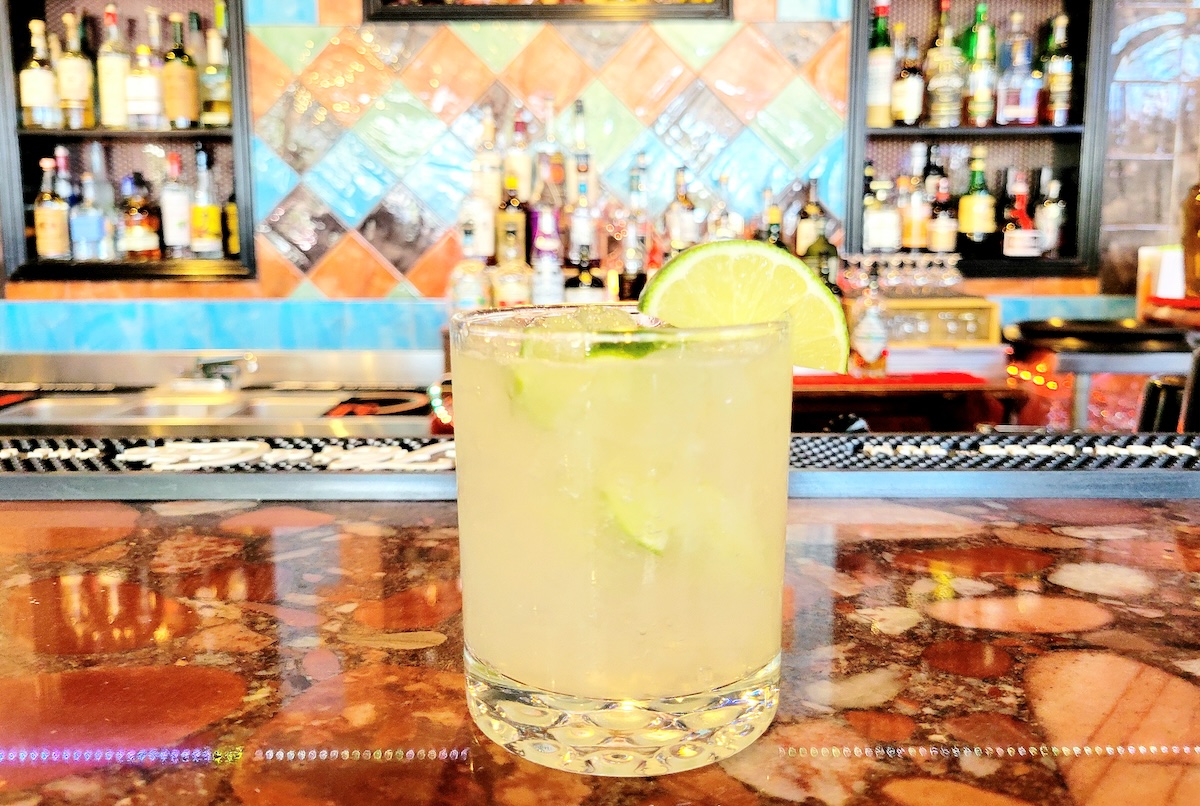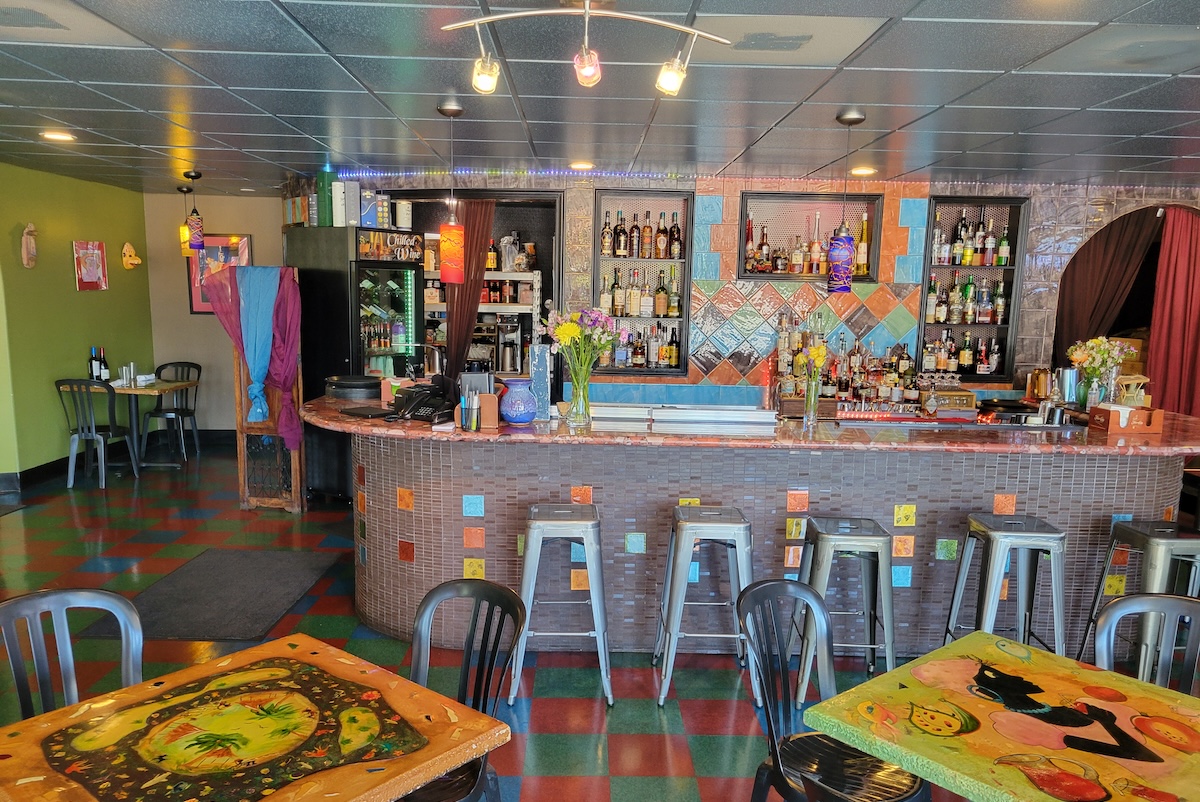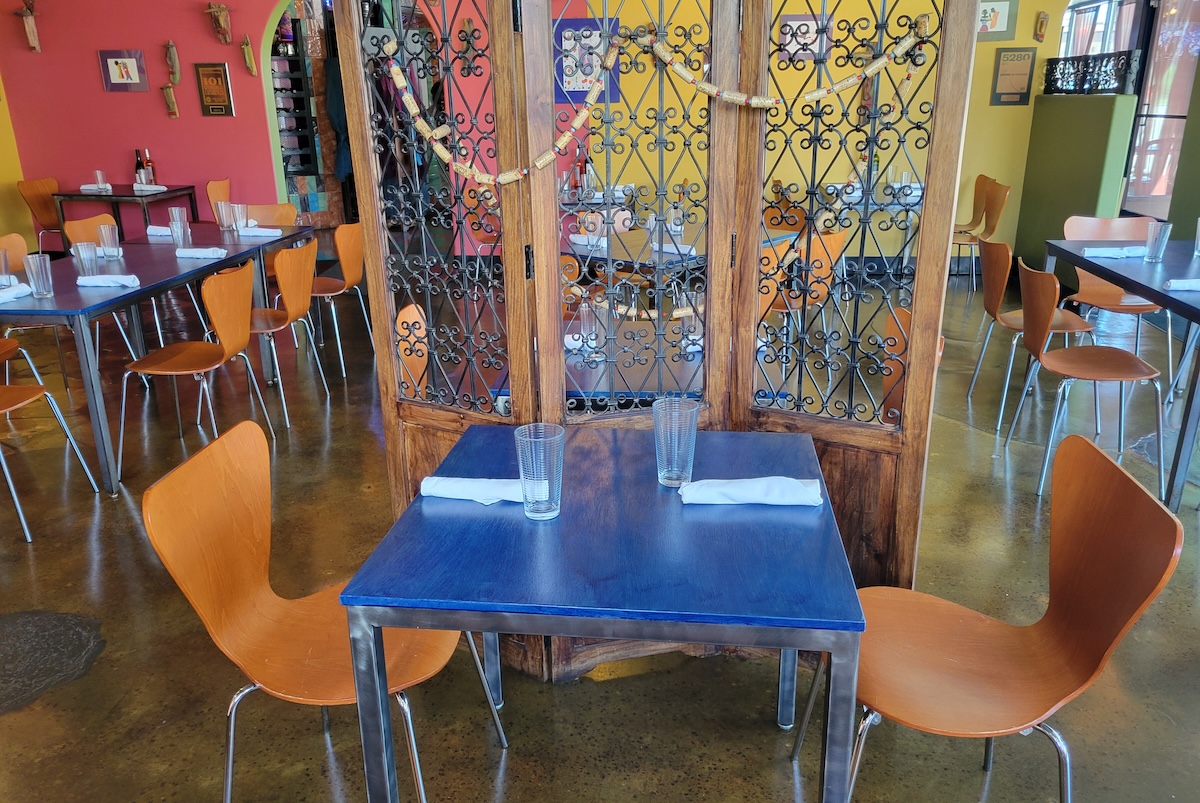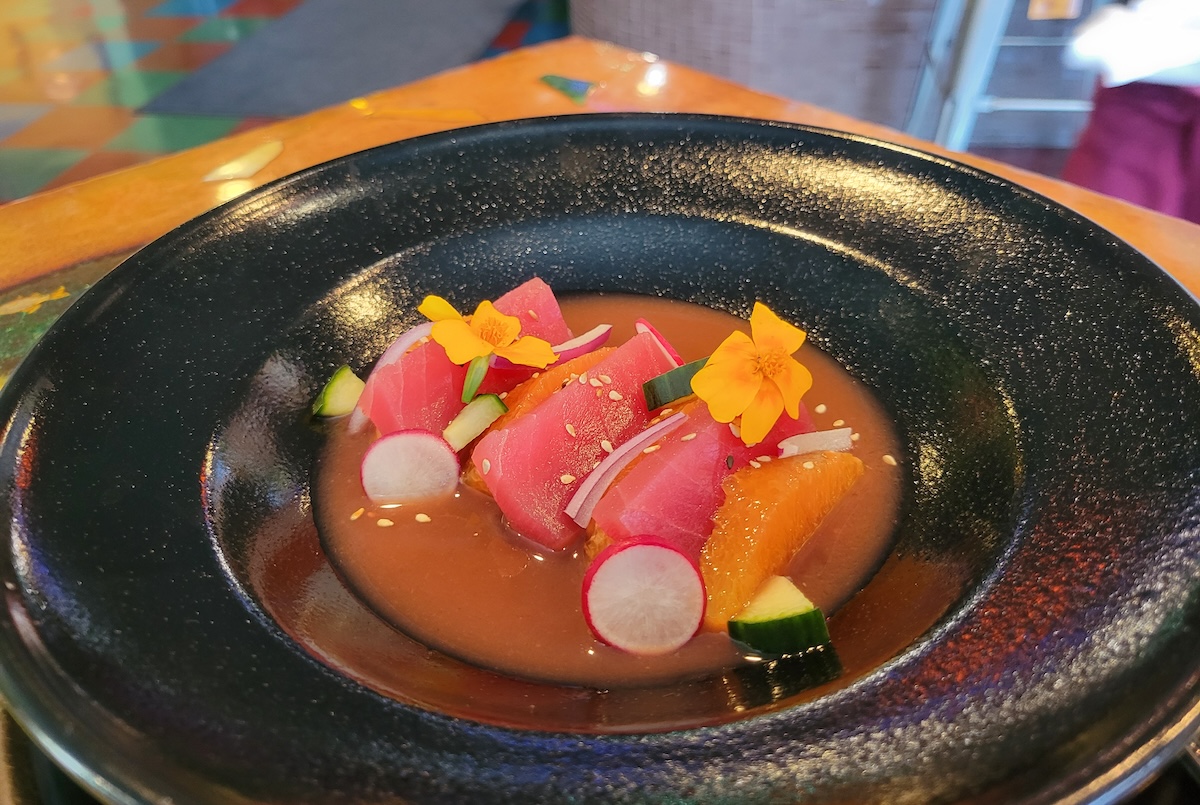When chef Tony Zarlenga and his wife Marla bought Cafe Brazil in the 1990s, they brought thoughtful, vibrant Latin American food to the Denver dining scene.
Over the decades the chef has broken the mold, not only with his time-honored restaurant, but with years of dedication to the craft of owning a restaurant. He’s been recognized in numerous publications. Won many awards, and, in 2015, was featured on Food Network’s Diners, Drive-Ins and Dives with Guy Fieri.
However, times have changed. Post COVID it’s been hard for Zarlenga to catch up on technology, rising costs of labor and ingredients, and the new generations’ taste for eatertainment. While some restaurants have always had a fleeting existence, appearing suddenly to make a mark on the dining world and gone as quickly as they arrived; other restaurants, like Cafe Brazil, have time, history, and a true love of the business built into the very foundation.

While the quality, service, and colorful inviting space of the restaurant remain, the question bodes if nostalgia will be enough to serve another decade of Cazuela Colombiana, Seafood Copacabana, and freshly made Caipirinha cocktails, staples of the Cafe Brazil menu. Inside guests find a weathered and dedicated staff on the floor and wine bottles on the tables, a throwback to old Denver and not a perk new businesses legally can do.
Now, four years post-pandemic, Zarlenga reflects on how times have changed. He discussed where restaurants are at right now, and what the future may hold for his own beloved eatery.
The False Narrative of Normal
The elephant in the room is that things are not, in fact, back to normal, especially for restaurant folk. While it appears many have resumed normal dining out habits, Zarlenga agreed a false narrative stating the world has returned to pre-pandemic operations taints current operations.
“Cities are losing some of their favorite restaurants daily and it’s hard to navigate all the demands that operators are faced with right now,” said the chef. “A lot of people were getting assistance from unemployment, and made more money [that way\ than working a few shifts at restaurants.”
A major part of the “new normal” comes down to staffing. Zarlenga added the lack of qualified labor put a huge stress on operators and restaurants who were already barely holding on since the global shutdown. Then there’s inflation and the rising costs of everything from food to rent to utilities.
“The cost of labor and the cost of goods have skyrocketed,” said Zarlenga. “Everybody, even in their personal purchases and shopping, are experiencing rising costs.”
The lack of disposable income affects this too. Less people are going out, and more people want to spend money only if they will be floored by the experience. According to Zarlenga, it’s more difficult than ever to find good product to work with, which, he added, is the key to making something special.
“The expectations are high, and the public deserves that,” he said. “But consistency has changed, labor and staff has changed, and the availability of product has changed.”
Why Dedication To Good Ingredients Matter
The demand for excellence is more important than ever. During the pandemic people ended up with a lot of second- and third-rate dining experiences through third-party delivery, said Zarlenga. So, instead of paying money for mediocre food, they decided to learn how to cook instead. People who were once dining out found they can spend at least half the amount at home.

Plus, they have control over the quality of ingredients, something the chef deems important as well. In fact, Zarlenga still sources ingredients for Cafe Brazil in an old-school fashion way, hand-picking foods at the market instead of getting them delivered.
“We look at things, see what’s fresh, talk to people, and find out what cooks well,” he said. “We cook with color, with flavor, and with things that complement each other, it’s what we’ve always done.”
Many restaurants, the chef pointed out, find themselves waiting around for deliveries, which takes time. And too often, the product arrives substandard. Restaurants then have no choice but to use that product when there’s no time left but to start prepping for service. The result is a dish that may be lacking in flavor or overall quality.
A New Era of Customers
Today chefs and restaurant staff are pivoting to serve a new kind of customer. Namely, added Zarlenga, the younger generations.
“We have clientele that have been coming here for 30 years, but they’ve aged so they don’t go out as much,” Zerlenga mentioned. “Today you have to attract new clientele, and everything is technology. But, if you’re older and don’t have that technology experience, you feel at a loss of how to attract that new clientele.”

Today’s technology has a lot to do with marketing. For starters, it involves captivating content for social media in order to depict a restaurant’s food, atmosphere, and unique qualities. Not only that, but said content needs to hook a viewer in during a quick video. But even that isn’t the magic recipe, especially when some restaurants can leverage public relations and media connections for exposure. Zarlenga discussed publications’ and social media accounts’ takes on “best of” posts. Sometimes, he said, restaurants that have only been open for a few months get featured.
“So many times, [restaurants] come out with a bang and generate a tremendous amount of interest, but within 2 to 3 years, they’re already gone,” he said. “It takes a lot to keep a restaurant open, and it takes a long time to build a good name and reputation.”
For example, well-loved Denver establishments like Gaetano’s, Bastien’s Restaurant, and The Cherry Cricket, which have stood the test of time. Each one of these stalwarts opened before the 1950s. And, while they’ve been updated and refreshed over the years, overall remain the same.

“The combination of ambiance, offerings, and service all comes together in an experience and it’s great, and any place has the ability to be the best in its category,” said Zarlenga. “Obviously you don’t succeed 100-percent every day all the time, [and] you’re only as good as the last people walking out the door think you are.”
Support Your Favorite Restaurants
As far as dining out goes, the future is a two-way street. Zarlenga said in order to succeed, restaurants need to basically, “improve everything.” It’s a tall order, we know. But what he means is that restaurant operators, particularly those feeling like they’re treading water, need to get more creative. This includes finding more cost effective ways to deal with food. But in turn, also making the dishes more exciting, especially for the younger diner. Keep in mind, your favorite establishments aren’t guaranteed to always be there, they count on your support to survive.
“It’s just a matter of going out and enjoying the restaurants you favor,” says Zarlenga. “When you’re going to celebrate, consider some of the establishments that have passed through the test of time, there’s a reason why they’re still around.”
What most people don’t realize is that the future of a restaurant is never clear. And once a restaurant owner gets to be, say in their 70s like chef Tony, retirement isn’t a given.
“It’s our life and we enjoy hospitality, the kitchen, the service, [and] making a difference in someone’s experience,” said Zarlenga. “But we really don’t have an exit, and financially, we’re not able to just pull out.”

The rising costs of today also make paying off any existing debt that much more difficult. Zarlenga said leaving a legacy would be wonderful, but for now, it’s just taking things day by day.
“We’re simple people, we don’t know a lot about business but what we do know is food, culture, and service, and that’s our strength,” said the chef. “Restaurants survive through the energy of their owners or principles, and through the passion of their staff and people. Somebody once said hope is not a strategy, we just want things to get better and change.”
Come see what has made Cafe Brazil such a favorite and taste the chef’s dedication to the food. Cafe Brazil is open for dinner Wednesday through Saturday, 5 to 9 p.m. 4408 Lowell Blvd., Denver, cafebrazildenver.com

